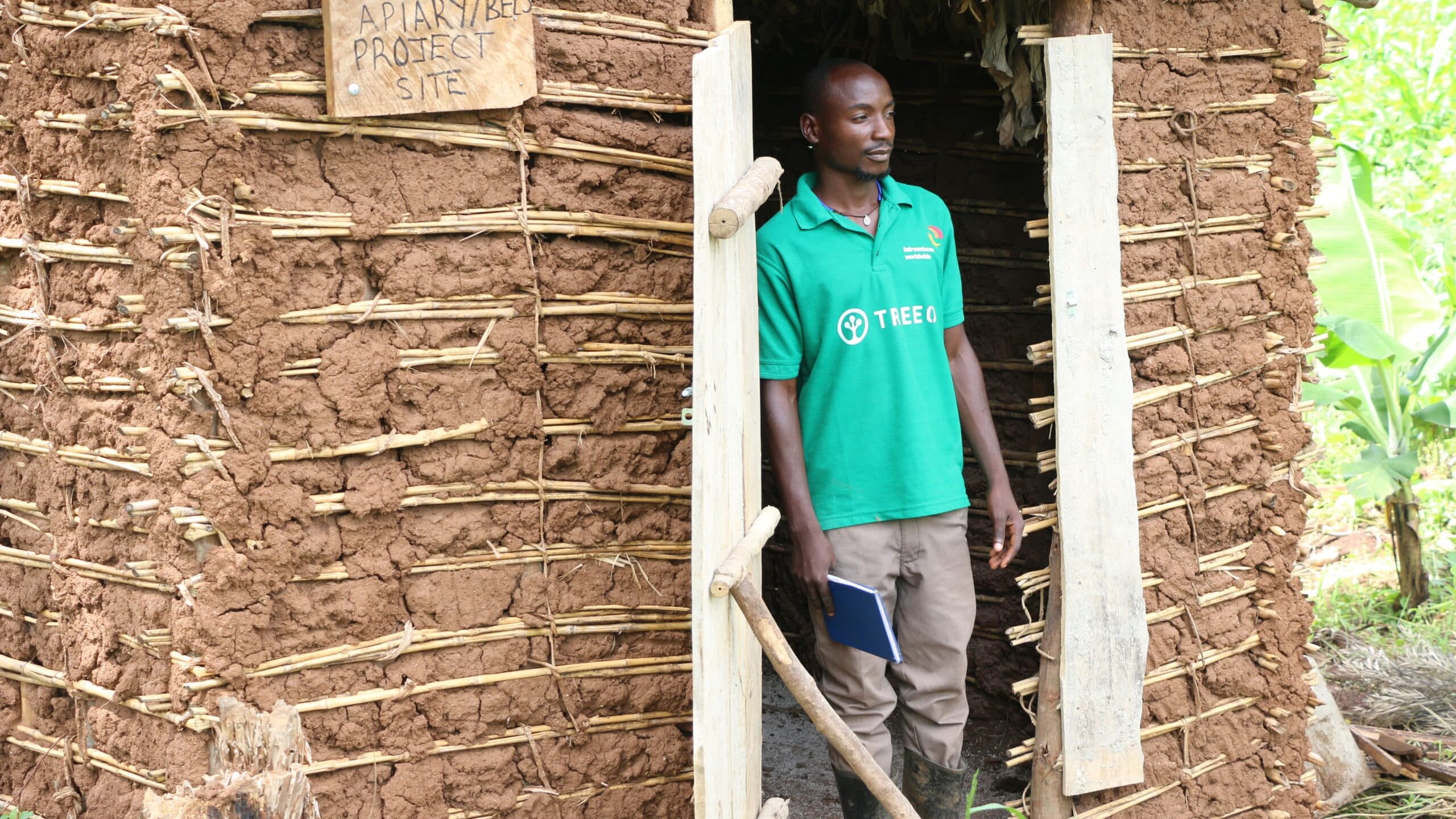
We work with our partners Latek Stay Alliance, and Eco-Agric Uganda on an agroforestry project in the Hoima, Kikuube and Kibaale districts. This partnership not only includes activities such as the raising and distribution of indigenous tree seedlings, but it also features animal helpers in the form of three beehives.
In Kibaale, Julius Businge introduces us to the apiary in a small reed mud house, which is home to three beehives that are of great importance to their ecosystem.
You are currently viewing a placeholder content from YouTube. To access the actual content, click the button below. Please note that doing so will share data with third-party providers.
More InformationOutside the apiary, Julius highlights a nearby stream as a source of water for the bees and cassava flour serving as a supplement to their diet. The bee project is a pivotal point to the success of the connected agroforestry project. By pollinating plants and producing honey, the insects contribute to a healthy and sustainable ecosystem.
You are currently viewing a placeholder content from YouTube. To access the actual content, click the button below. Please note that doing so will share data with third-party providers.
More InformationIn his quest for sustainability in agriculture, Julius shows off urban farming applications aimed at inspiring people to grow crops even on small lots and in tight spaces. “We grow these crops in bags that can be utilized in an urban setting,” he says. The list of vegetables at the demonstration place includes cabbages, eggplants, onions and others that can grow alongside trees in an agroforestry concept.
You are currently viewing a placeholder content from YouTube. To access the actual content, click the button below. Please note that doing so will share data with third-party providers.
More InformationJulius goes on to show us how he monitors the trees on the farm. He demonstrates how to manually capture growth rate data for a single tree on a monthly basis. His documentation reveals a monthly growth rate of around 16 cm. In the near future, single tree monitoring can be done using TREEO, the app developed by Fairventures Digital.
You are currently viewing a placeholder content from YouTube. To access the actual content, click the button below. Please note that doing so will share data with third-party providers.
More InformationOne of Julius’ colleagues – Godfrey Adjuna, the nursery operator – explains the different tree planting intervals for the project. On one of the test fields, he demonstrates the application of our agroforestry approach, which involves growing trees and intercrops together on one field.
You are currently viewing a placeholder content from YouTube. To access the actual content, click the button below. Please note that doing so will share data with third-party providers.
More InformationBesides beekeeping and agroforestry, the project consists of growing various indigenous tree seedlings in nurseries. Godfrey shows us the green house where the team raises the seedlings that are later distributed to local farmers. He notes that the seedlings are given to farmers for free, and that the team also provides assistance on how to properly intercrop trees and vegetables.
You are currently viewing a placeholder content from YouTube. To access the actual content, click the button below. Please note that doing so will share data with third-party providers.
More InformationGodfrey points out that, originally, tree seedlings like Maesopsis eminii have a hard seed coat protecting its valuable core. “So, to make sure that the seedlings germinate out of this hard seed coat, you have to lay a sand layer on the soil. Then you put your seeds on that layer.” After watering the nursery bed and covering it with grass material, one can slowly start to see the seedlings coming out of their hard seed crust. After that, it will not take long before they grow into a real, small tree.
The long-term project goal of the Stay project is the establishment of a functioning, partly self-financing, reforestation sector in Uganda. This reforestation sector creates income for small farmers, combats climate change and supplies the industry with timber. We are grateful for Julius, Godfrey and all the people in Uganda implementing these impactful projects.